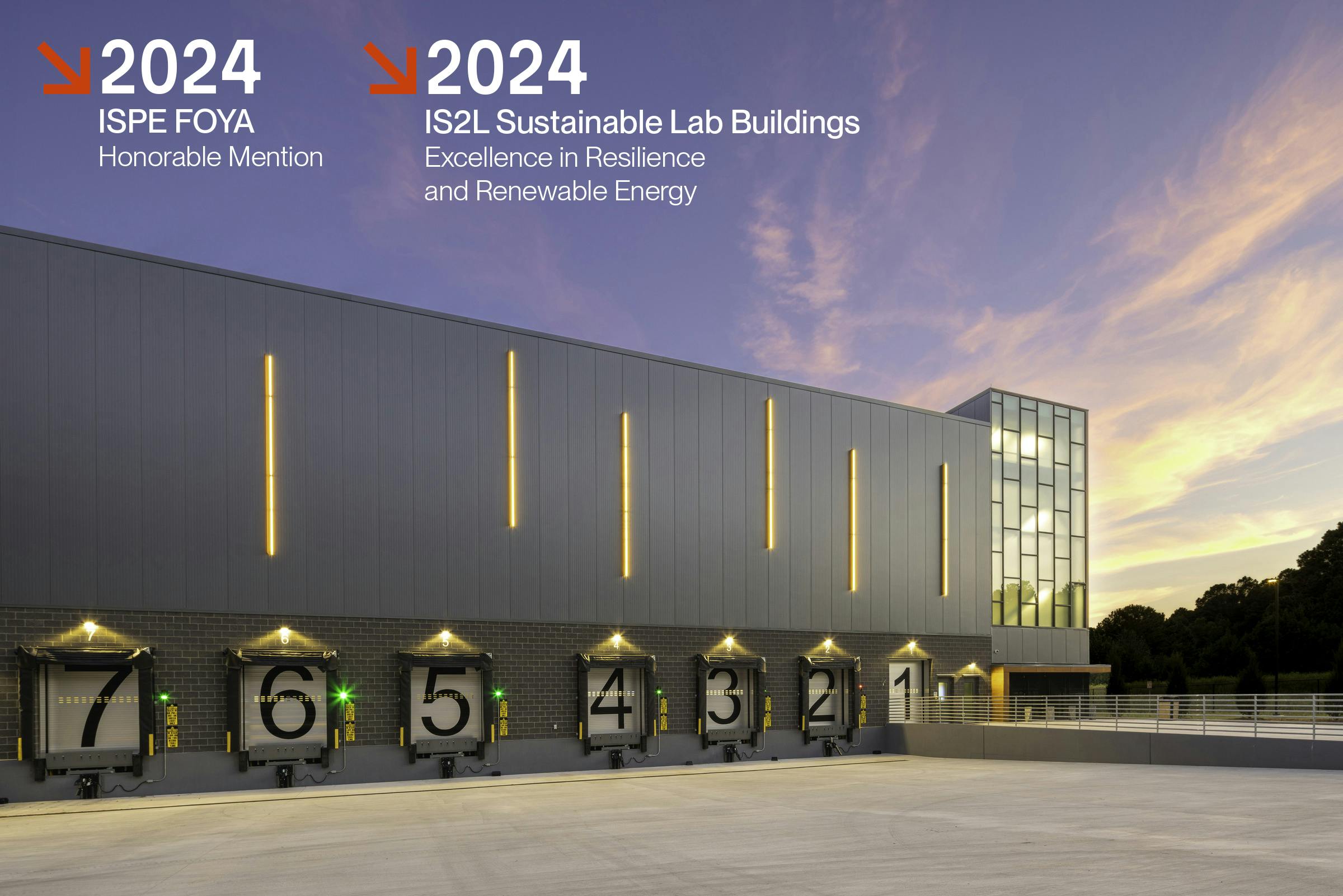

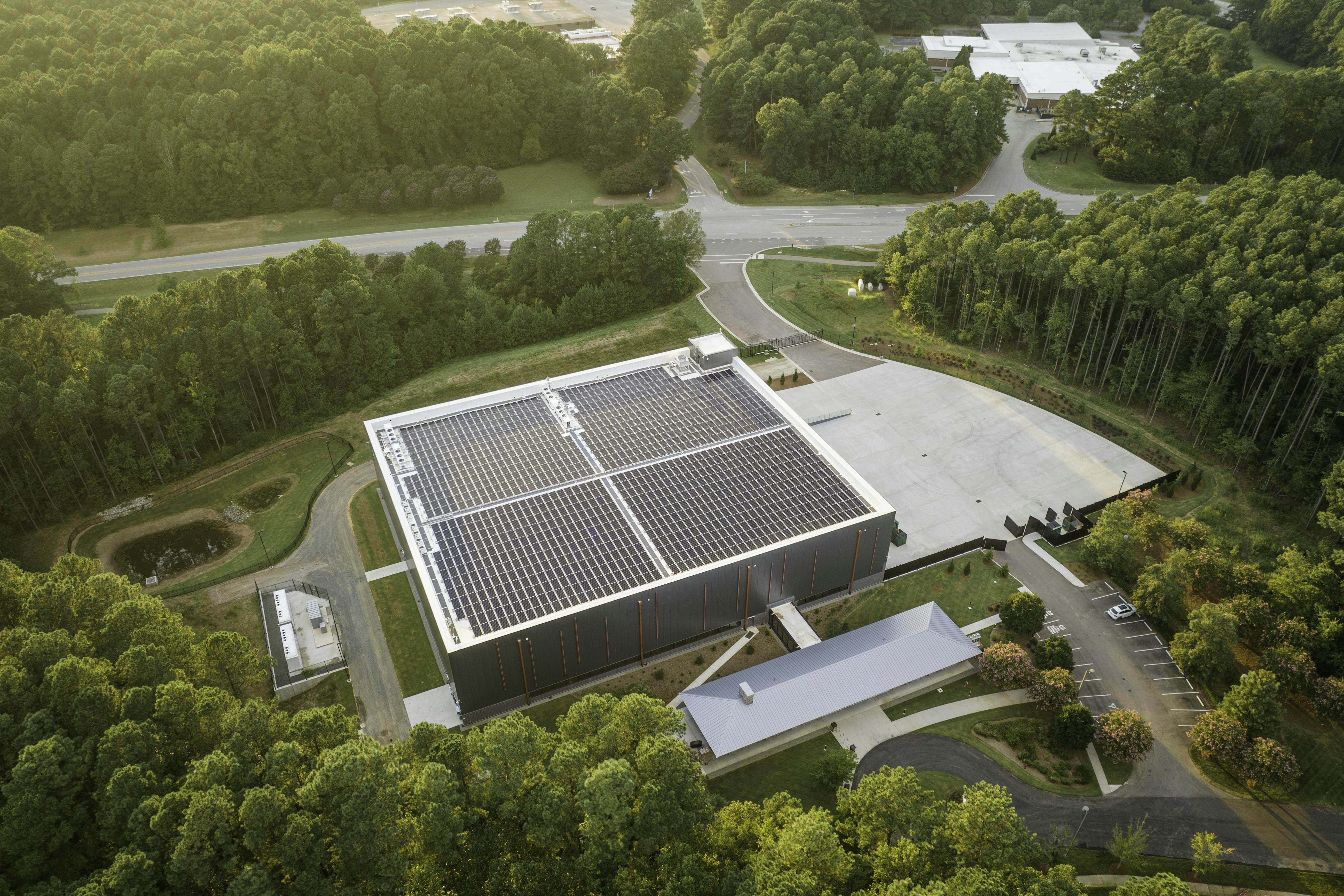

Project Lightyear Receives COTE Award
United Therapeutics’ Project Lightyear has been recognized with the 2025 AIA North Carolina Committee on the Environment (COTE) Award, celebrating its performance as a net-zero, all-electric industrial facility and its contribution to a new model for sustainable pharmaceutical logistics.
The jury cited the project as “a case study for what should come in the future,” describing the building as “a machine in efficiency; it does its job but takes nothing from the earth in return.”
Project Lightyear demonstrates that these energy-intensive facilities can serve the purpose of cold-storage warehousing with a positive environmental footprint. The jury emphasized, “That’s what we should be doing with all these types of facilities,” and described the project as genuinely inspiring for its example and impact.
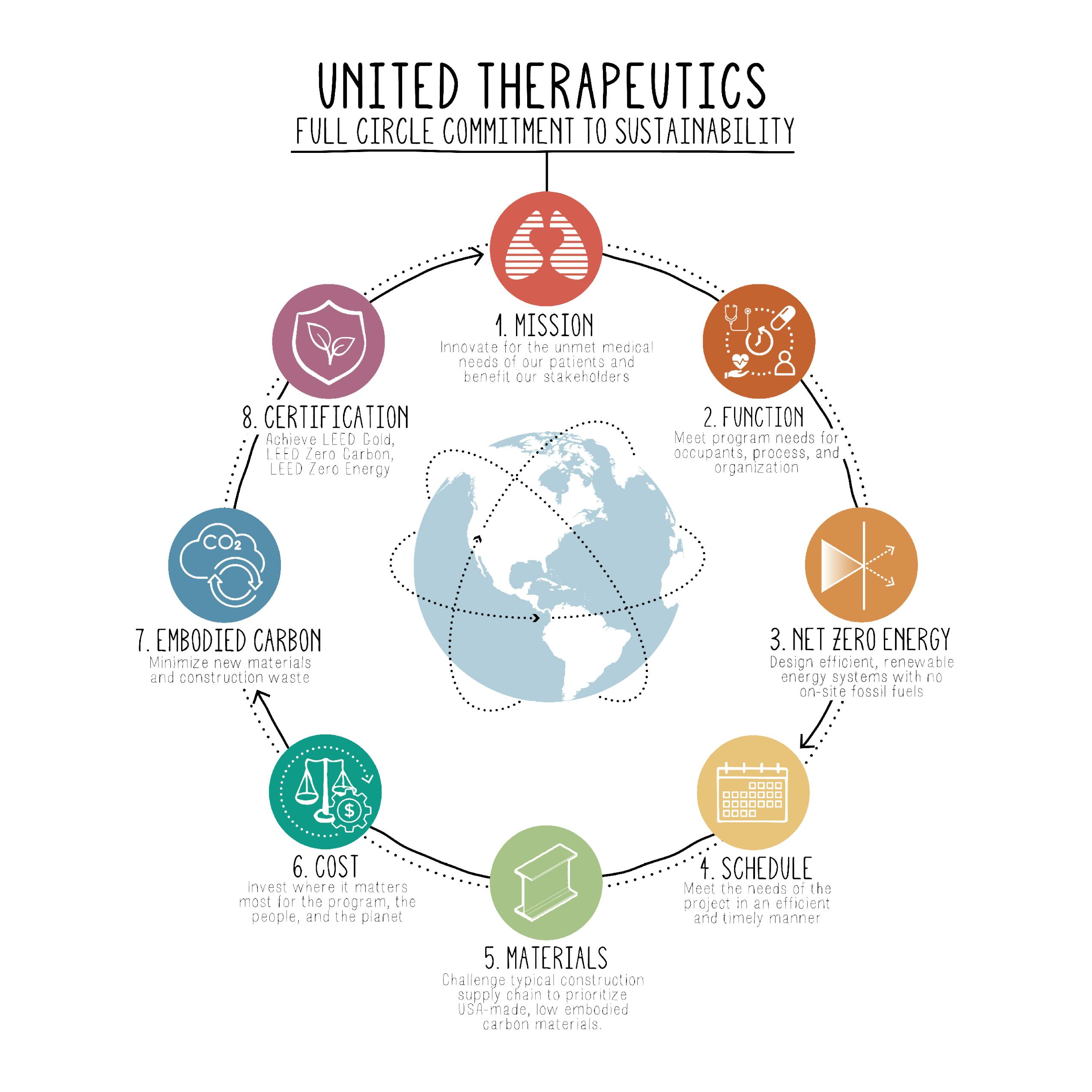



"At United Therapeutics, we adopted the mindset that we could develop life-saving medicines for patients without harming the planet."
– Dr. Martine Rothblatt, CEO, United Therapeutics
Project Lightyear’s integrated energy strategy uses nearly 1,200 rooftop photovoltaic panels, modular battery backup storage, and a microgrid control system. This autonomous infrastructure allows the facility to maintain full functionality during grid outages, eliminates on-site fossil fuel use, and achieves a 31% reduction in energy use intensity compared to baseline industrial models. The project achieves both Site Carbon Zero and Site Net Zero performance.
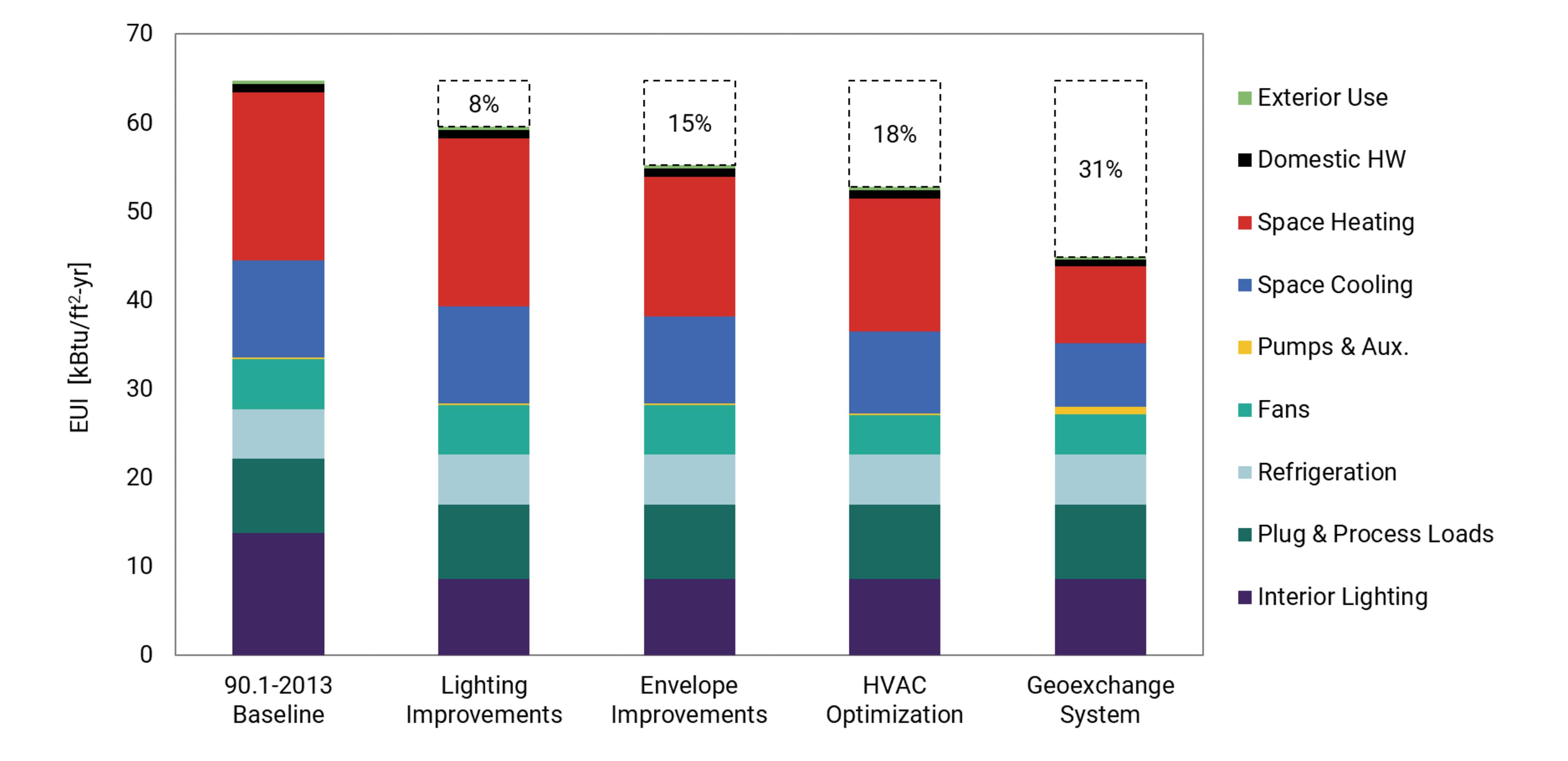

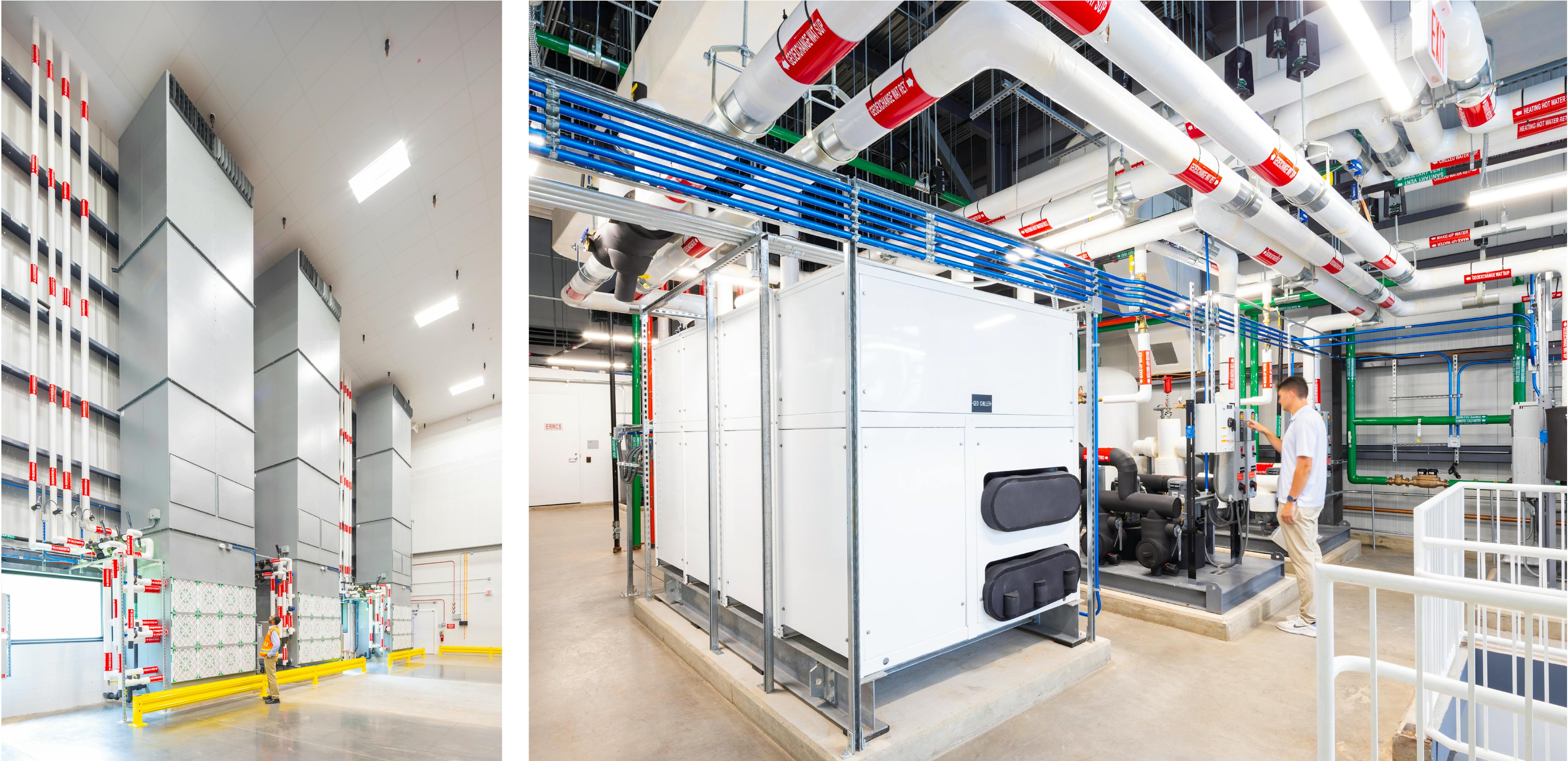

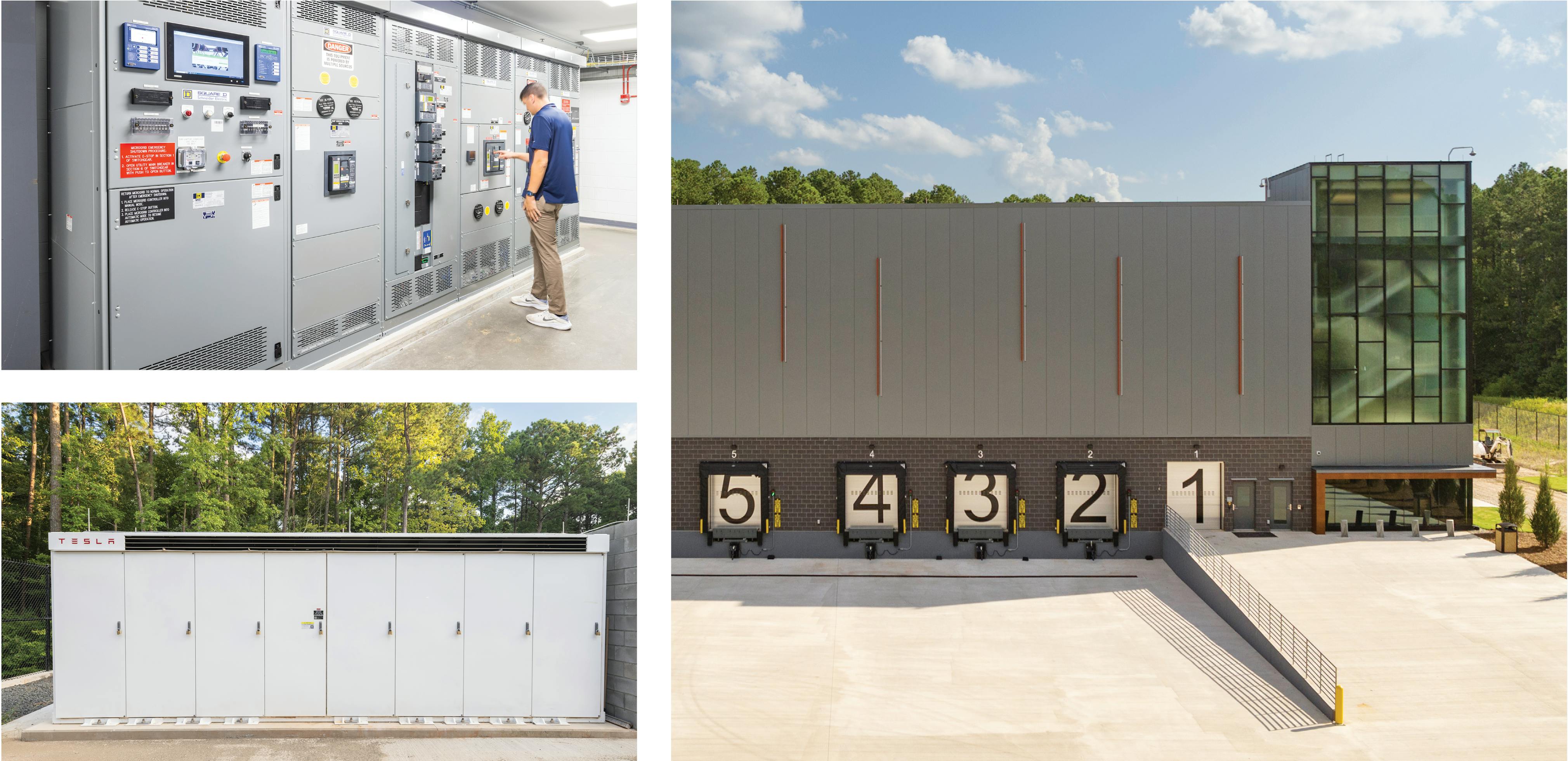



The site approach emphasized the client’s commitment to a sustainable experience. The project addresses preservation and context through the retention and incorporation of an existing fieldhouse by Frank Harmon Architects. The existing structure was incorporated as a public threshold between the industrial program and its surroundings.
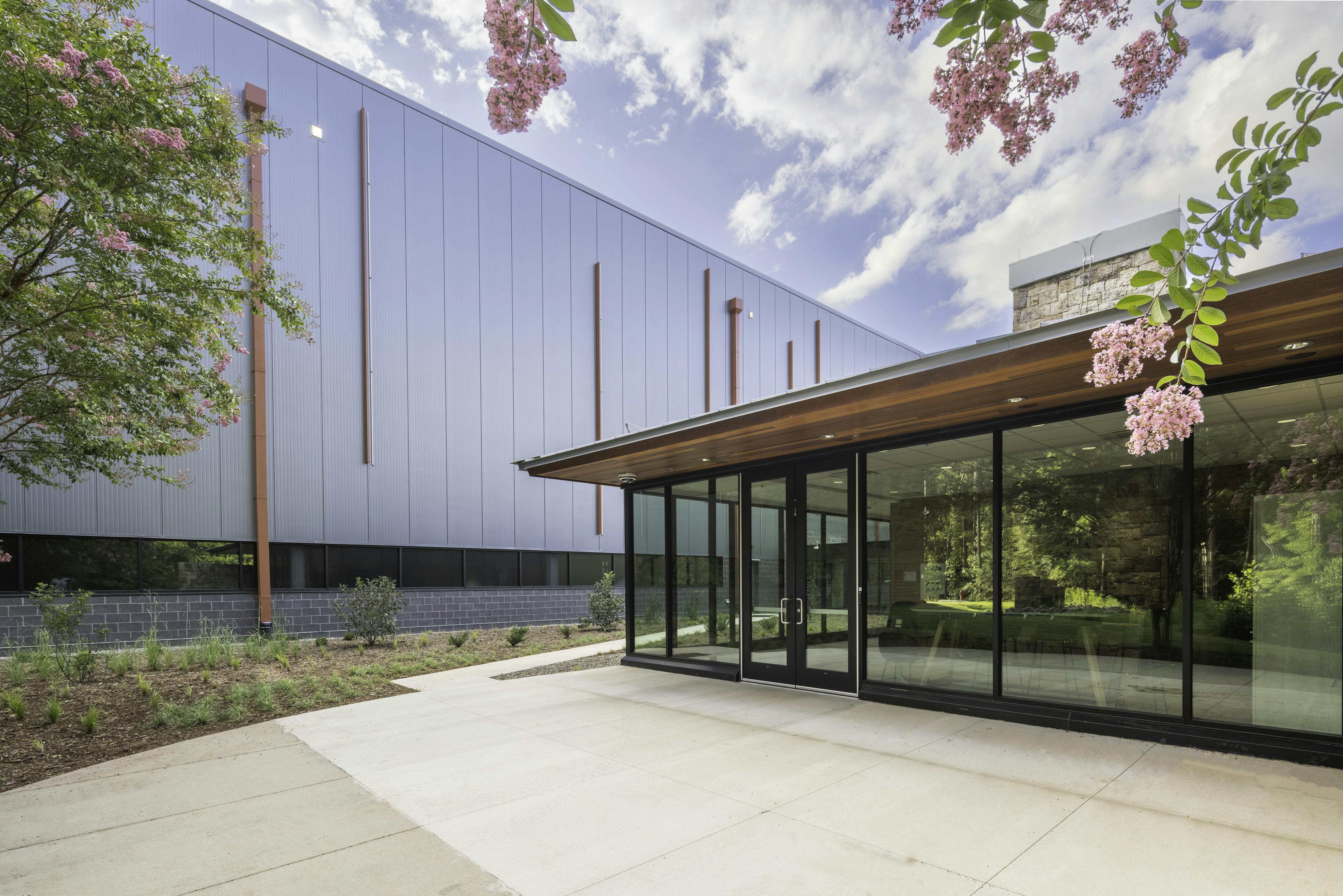

Experiential graphics within the connector articulate the “path to Net Zero,” making the building’s systems and intent visible to users and visitors. The pharma program itself occurs within a repurposed soccer field, reducing impact on wetlands and tree canopy while consolidating expansion within an already disturbed area.









